Air source heat pumps extract energy from the outdoor air and provide heating and cooling compactly and efficiently. While the technology is promising, users take some time to get used to it. Because of their low-temperature flow, these heat pumps should not be frequently turned off and on. But should they ever be turned off?
Air Source heat pumps should never be turned off completely. This is because it takes a lot of time and energy to reheat the home to comfortable temperatures. An alternative to switching them off would be setting them to minimum temperatures to reduce the time required to heat up.
In general, it is recommended that you leave your air source heat pump running because these pumps are designed to run for long periods. But if you are away from home, say, for longer periods, keeping the unit active may not be a good idea.
Before we explain why let’s see how these systems work.
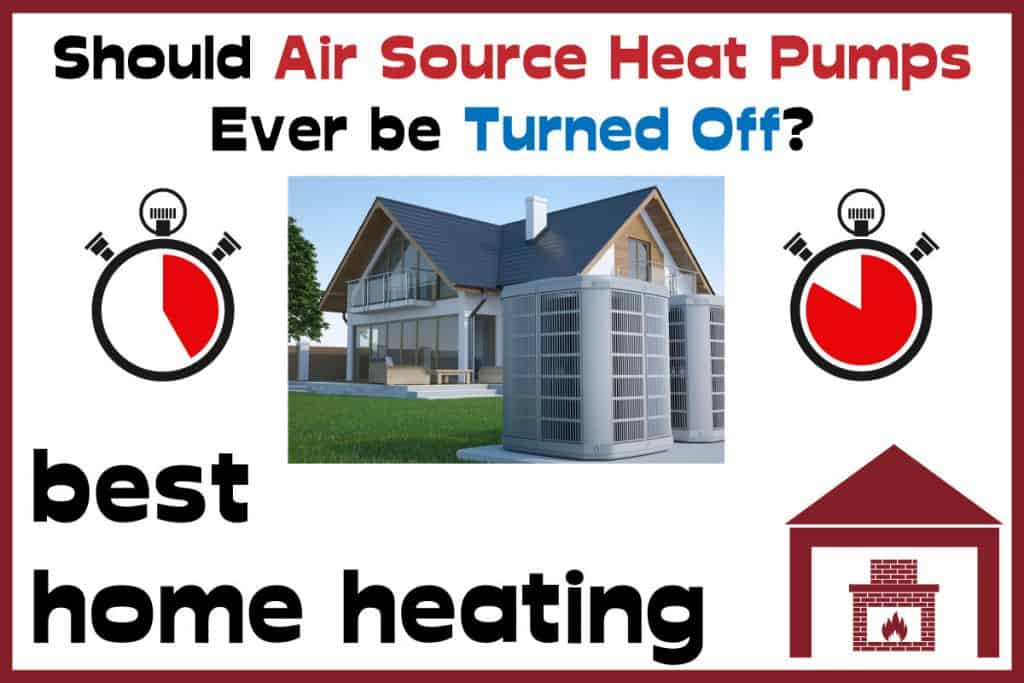
How do Air Source Heat Pumps work?
Typically, an air source heat pump has an outdoor unit and an indoor air-handling unit. The outside unit has tubes filled with liquid refrigerant. As outside air is blown over the tubes, the refrigerant warms up and turns into gas.
The gas then travels via a compressor, which further raises its temperature. A heat exchanger passes the heat to heat emitters, such as radiators or an underfloor heating system. Meanwhile, the refrigerant turns liquid again, and the process continues.
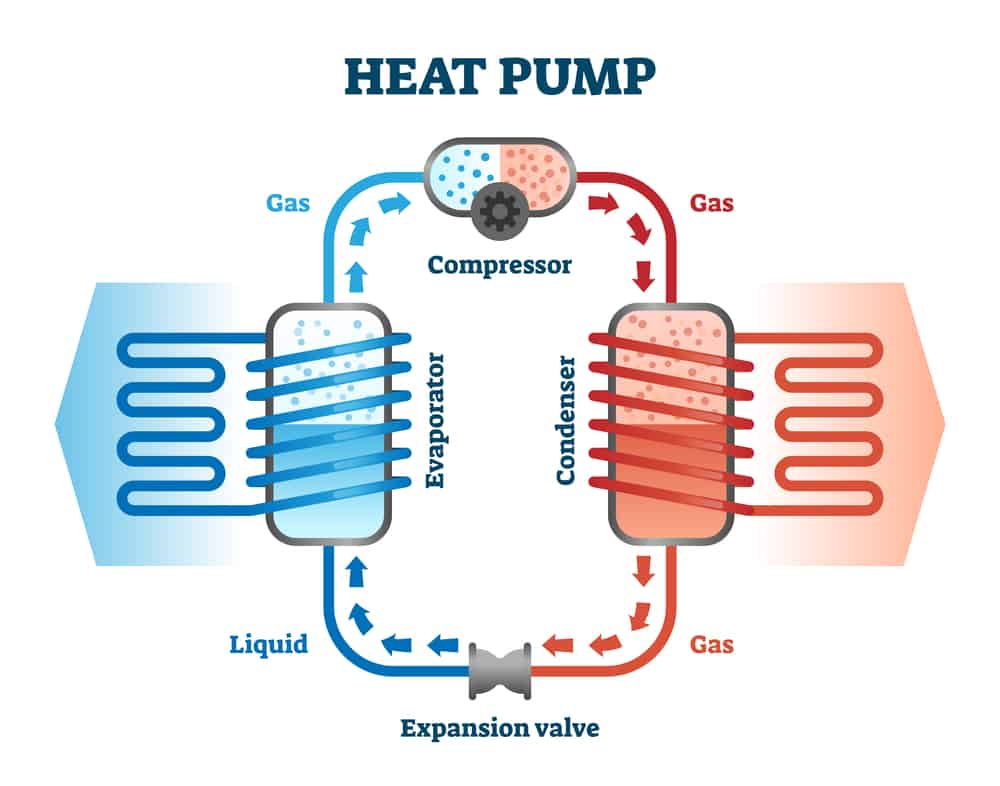
While a boiler operates at around 70°C, an air source heat pump works at a significantly lower temperature: around 35°C to 45°C. If you are replacing a boiler with a heat pump, your existing radiators may not be compatible with it.
Because ASHPs operate at lower temperatures, they require heat emitters with large surface areas. Underfloor heating systems meet this purpose very well. That’s why these heat pumps are almost exclusively used with underfloor heating systems. Radiators with large surface areas also work pretty well.
What happens when you turn an Air source heat pump off? How does the unit turn back on?
Air source heat pumps can run for long periods. In general, your heat pump should not be turned off, even when you don’t want heat. If you keep the system inactive for a long time and then turn it on, it has to use more energy to restore sufficient temperature. And that can be expensive. It is cheaper to leave the system running nonstop.
As you turn on the heat pump, the outside unit begins to extract heat from the air. The refrigerant takes about a couple of hours to heat up, and the underfloor heating system takes several hours to provide sufficient heating. If your house is not properly insulated, which is the case with houses built before the 1970s, you may have to wait a couple of days to get sufficient heating from the system.
Air source heat pumps should be paired with smart thermostats as this would help regulate the temperature in the house. The thermostat would help schedule the on and off times for the heating system especially when there is no one at home for extended periods. This is to prevent the pipes from freezing while away and also reduce heating expenses.
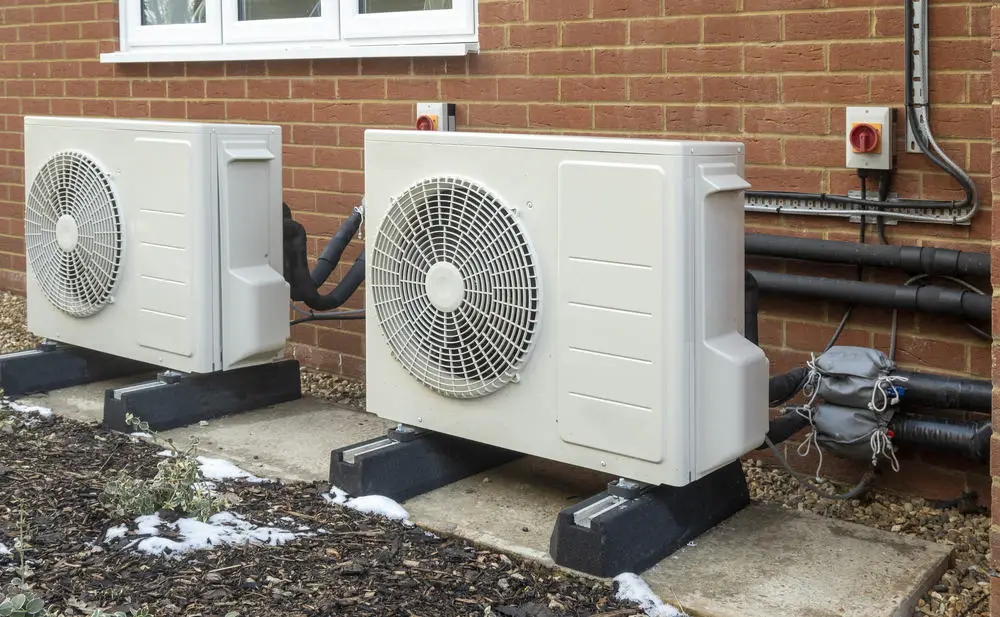
Is it expensive to turn an Air source heat pump off and on (and why?)
Coefficient of Performance (CoP) is the unit used to measure the efficiency of a heat pump. If a heat pump has a CoP of 3, it can produce 3 kWh of heat from 1 kW of electricity. To produce 12,000 kW of heat —the amount an average home requires annually—the pump would use 4,000 kWh of electricity.
This figure can vary depending on factors such as the size of your home, the level of insulation, and your heat pump’s overall efficiency. If the pump has a CoP of 4, it would use 3,000 kWh of electricity to produce 12,000 kWh of heat.
It is not a good idea to turn off your heat pump completely because the pump will try harder to raise the optimal temperature, resulting in more energy usage. Air source heat pumps do not respond quickly to temperature changes. If you want to raise or lower the temperature, you should do so by one or two degrees at a time.
Should you turn off an Air source heat pump when it’s summer or hot weather?
If your heat pump has a “summer” mode, turn it on. You can also reduce the level of your room thermostat. As the autumn approaches, raise the heating level slowly again. Keeping water always lukewarm is less expensive than heating cold water, and that’s why we do not recommend completely turning your heat pump off.
If you are living in a region where summer gets hot and your home requires cooling, you can use the same heat pump for cooling. In summer, the system works in reverse and provides cooling.
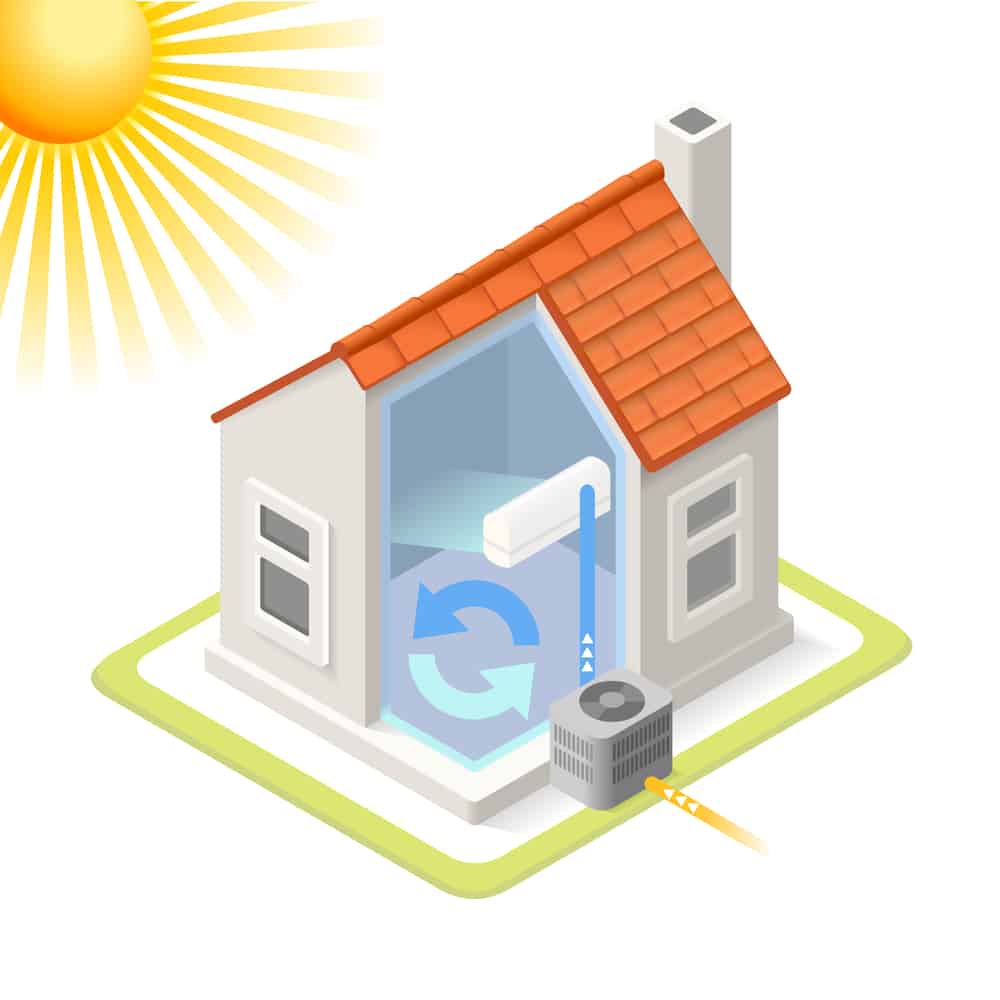
Should you turn off an Air source heat pump when you’re on holiday?
Check the control panel of your air source heat pump. There should be a “frost protection” or “holiday” setting. Turn it on. It will lower the room temperature while preventing the pipes from freezing in cold weather.
Some units come with an intelligent defrosting(Sprun Heat Pumps) function that automatically turns on when frosting conditions are met. This feature ensures economy and prolongs the service life of the pump.
How quickly do air source heat pumps respond to changes in the desired temperature?
The heating level of your air source heat pump should not be raised or lowered drastically. Air source heat pumps respond pretty slowly to changes in temperature. Turn the temperature up by not more than two degrees at a time. If you drastically increase or decrease the level, the unit will fail to respond quickly and use more energy to provide the desired temperature.
An air-source heat pump can be combined with an oil or gas boiler. This hybrid system allows you to control room temperature rapidly, and meet hearing demands more efficiently. If your air source heat pump fails to meet your heating demands during the cold months, consider combining the pump with a boiler.
The operation mode of a hybrid heat pump is automatically determined by the outside temperature, and that means the system ensures the lowest running cost. The heat pump mode gets activated during mild temperatures—around 12°C. In this mode, the primary efficiency of the hybrid heat pump can reach up to 160%.
During winter, when temperatures are around 1°C, the hybrid system will enter the real hybrid mode, combining the heat pump and gas boiler as energy sources. If temperatures drop to minus 10°C, the heat pump will switch to gas consumption only. With a hybrid heat pump, you get the best of both worlds.
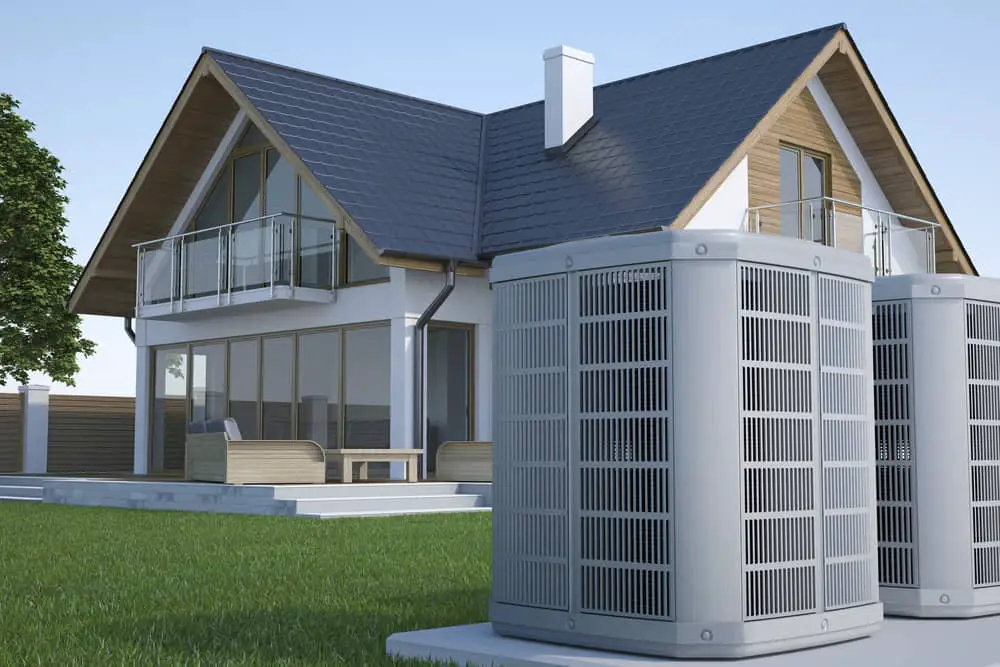
Conclusion – Main Considerations with running times and Air Source Heat Pumps
The bottom line is, the air source heat pumps are designed to operate for long periods and respond slowly to changes in temperature settings. Rather than turning the system off, consider leaving it on, in a constant setting, especially during cold weather. Frequently turning an air source heat pump on and off is a bad idea.
What you can do is raise or lower the temperature to match your heating demands. Slightly lower the temperature at night and raise it in the morning. If you are away for a day, don’t change the setting. Leave the unit run as usual.
If you are away for a week, turn on the frost protection mode. And turn on the summer mode during the summer. Whether it is summer or winter, if you are away for longer than a week, just turn off the heat pump. It all comes down to your heating demands.
